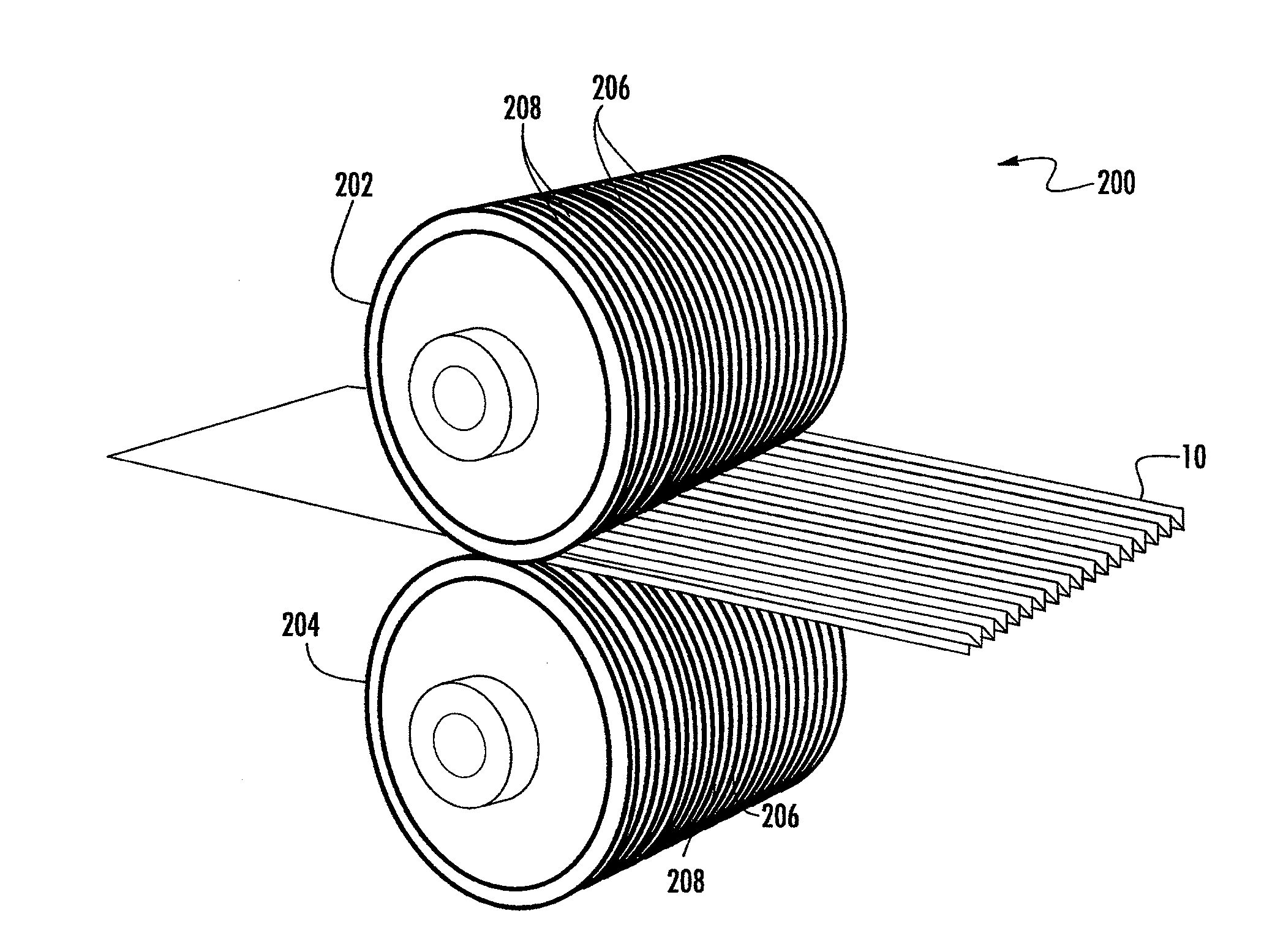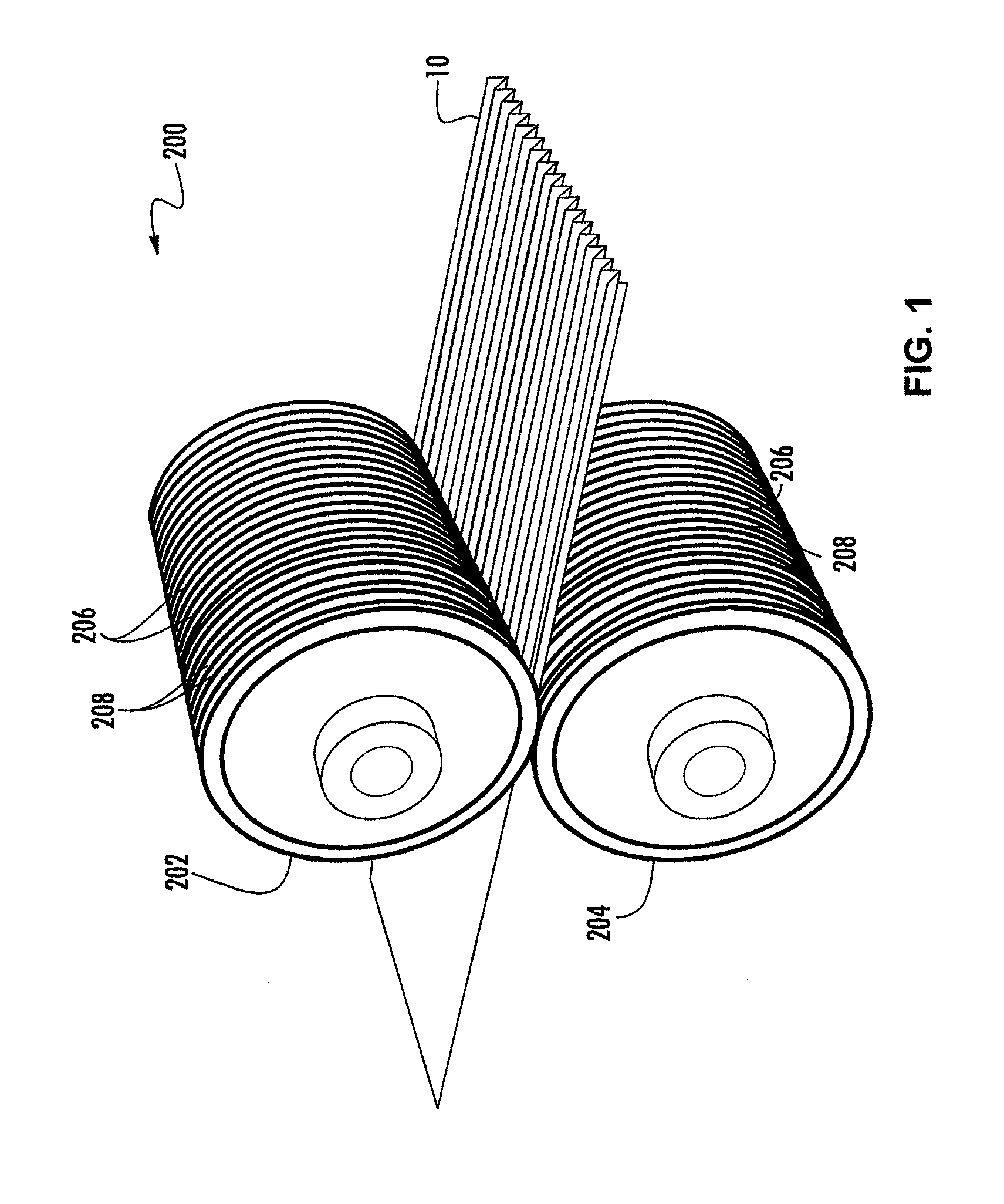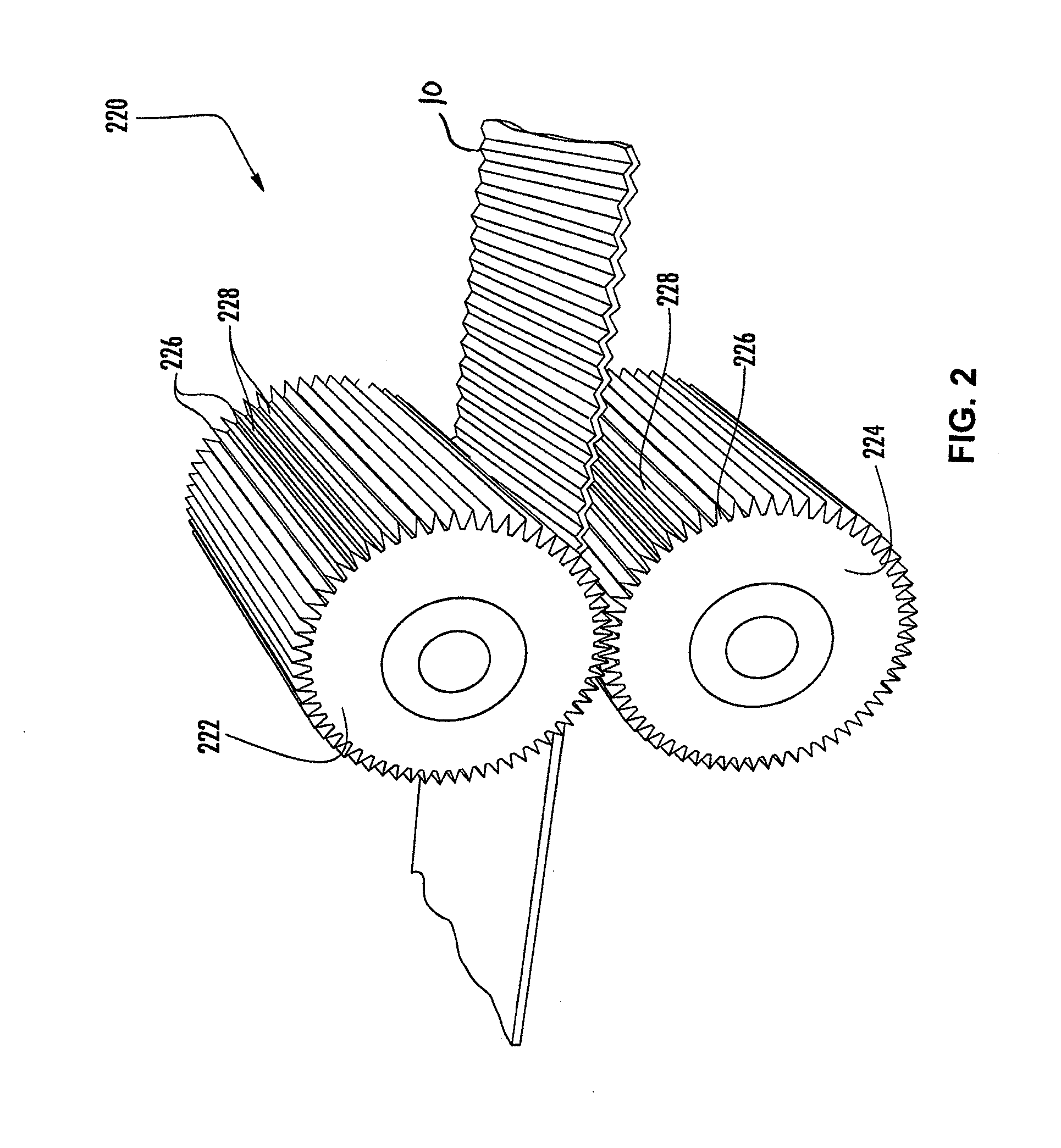Extensible Nonwoven Fabric
a non-woven fabric, elastic technology, applied in the direction of weaving, bandages, tampons, etc., can solve the problems of reducing the elasticity of the fabric, so as to improve the elasticity and extensibility. , the effect of improving the elasticity
- Summary
- Abstract
- Description
- Claims
- Application Information
AI Technical Summary
Benefits of technology
Problems solved by technology
Method used
Image
Examples
examples
[0107]Nonwoven fabrics in the following examples were prepared via a Reifenhaeuser CB-100 spunbond spinning beam. Unless otherwise indicated all percentages are weight percentages. The materials used in the examples are identified below.
[0108]PP-1: SABIC®, 511A; a Ziegler-Natta polypropylene, with a melt flow rate of 25 g / 10 min (ASTM D-1238) and a density of 0.91 g / cc (ASTM D-792).
[0109]PP-2: LUMICENE®, MR 2001; a metallocene polypropylene, with a melt flow rate of 25 g / 10 min (ISO 1133) and a density of 0.905 g / cc (ISO 1183), provided by Total Petrochemicals.
[0110]PP-3: LUMICENE®, M3766; a metallocene isotactic polypropylene, with a melt flow rate of 24 g / 10 min (ASTM D-1238) and a density of 0.90 g / cc (ASTM D-1505), provided by Total Petrochemicals.
[0111]PP-4: Borflow HL508FB, a meltblown propylene available from Borealis and having a melt flow rate (MFR) of 800 g / 10 min tested at 190° C. / 2.16 kg.
[0112]PP-5: LUMICENE®, M3866; a Ziegler-Natta polypropylene provided by Total Petroc...
PUM
| Property | Measurement | Unit |
|---|---|---|
| elongation | aaaaa | aaaaa |
| elongation | aaaaa | aaaaa |
| elongation | aaaaa | aaaaa |
Abstract
Description
Claims
Application Information
 Login to View More
Login to View More - R&D
- Intellectual Property
- Life Sciences
- Materials
- Tech Scout
- Unparalleled Data Quality
- Higher Quality Content
- 60% Fewer Hallucinations
Browse by: Latest US Patents, China's latest patents, Technical Efficacy Thesaurus, Application Domain, Technology Topic, Popular Technical Reports.
© 2025 PatSnap. All rights reserved.Legal|Privacy policy|Modern Slavery Act Transparency Statement|Sitemap|About US| Contact US: help@patsnap.com



